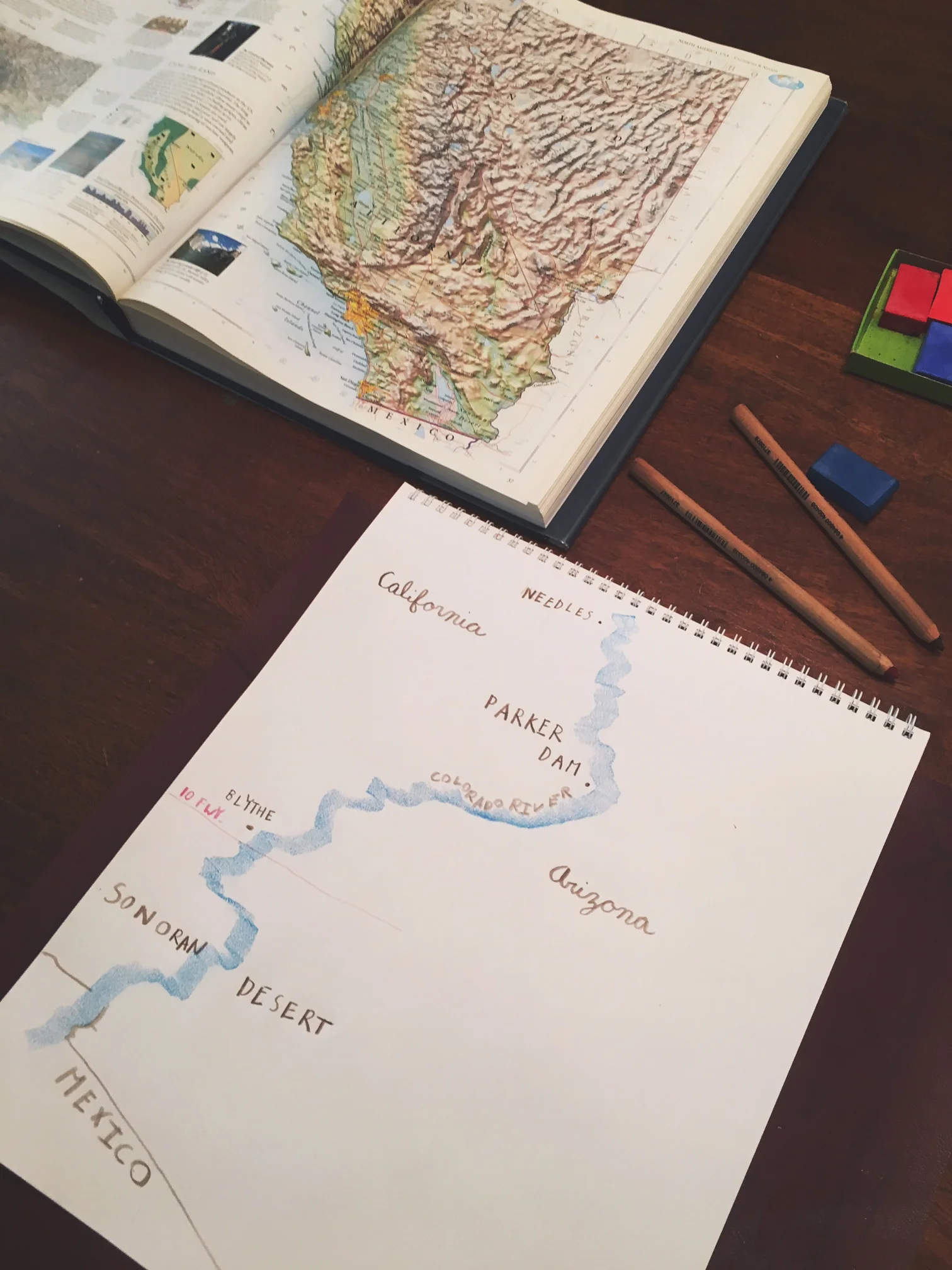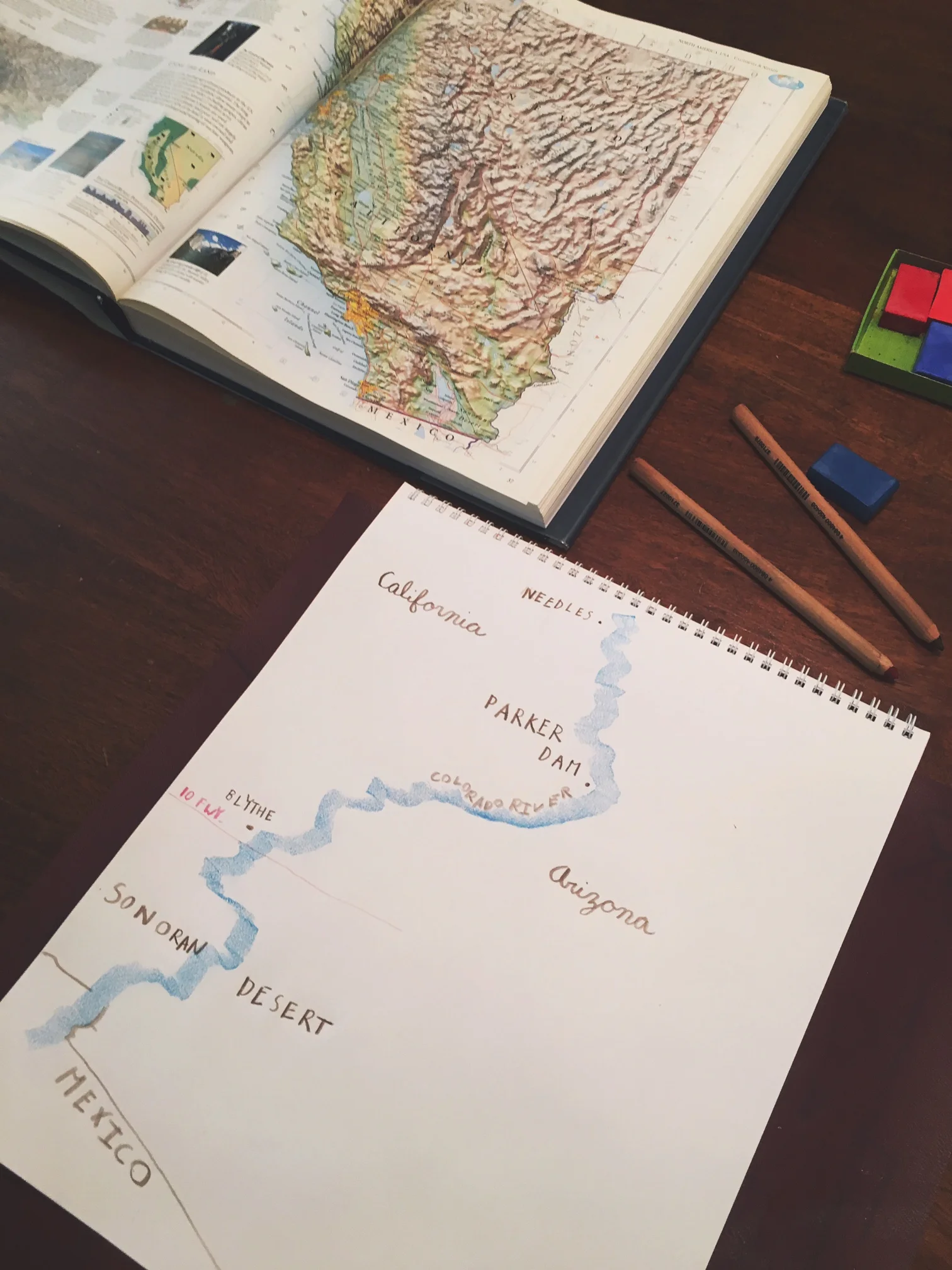
Waldorfish Blog
Staying True to Steiner: Honoring the interplay between routine and variety.
At the crack of dawn on a recent Sunday morning, my husband and I -- and our 9-year-old son -- piled sleepily into our car in Los Angeles and started driving across the Sonoran desert to watch a baseball game in Arizona.
About 3 hours later, we crossed into our neighboring state and made note of the meandering border between us: the Colorado River, glistening gold and blue.
After experiencing some highs and lows (low: the Dodgers lost; high: the acquisition of a game ball) we drove 5 hours home. On the same day.
Why would we do that, you might ask? Well, there are two answers to that question.
One is, we had to work on Monday.
The second is, we are a homeschooling family.
We follow the Steiner tradition of education, and in his words: “the children are the curriculum” (Tasks and Content of the Steiner-Waldorf Curriculum, pp. 15).
I take that to mean that our children and their interests, abilities, and experience of the world cannot and should not be segregated. In order for our son to truly get a feel for distance and time, we felt that it was important for him to see the expansive desert for himself and experience it by day and by night. Our hope when he is a father, is that he too will be inclined to make sacrifices for his children, and do things that they will remember for the rest of their lives, even if they are tiring and inconvenient for him. Love is action, and education encompasses not only knowledge but character-building.
I was clear about the fact that school was not going to be happening on Monday morning after a 18-hour day on Sunday. However when we did return to our school work, I had a good idea of what I wanted him to explore.
"A variety of ways and means are needed to bring vital skills and useful knowledge to young people so that they feel inspired by and invested in learning: education is a process through which culture becomes personalized, and in becoming personalized, culture is also changed and re-charged." (Tasks and Content, pp. 14)
The first involved his love of the Japanese language and his favorite baseball player, Dodgers pitcher Kenta Maeda. I printed out a screenshot I’d taken from Maeda’s Instagram story on game day and my son got to work translating his message. Maeda, born in Osaka, writes almost exclusively in his native language. The abbreviated nature of Instagram Stories made it a suitably brief passage for translation.
"...heart, head, and hands [form] the primary educational paradigm at a Waldorf school. Rather than focus the educational work solely around the objective of acquiring knowledge, creating a meaningful learning process itself becomes the focus." -- Jack Petrash, Understanding Waldorf Education: Teaching From The Inside Out, pg. 24
The second thing I asked of him, after we studied the southwestern United States in our atlas, was to record a blind contour drawing of the Colorado River in his Geography main lesson book, then write in landmarks on either side of the border. It was interesting to watch him decide what to include, and moving to see him join the great human endeavor of understanding ourselves and our places by putting pencil (and in this case, a beeswax block crayon) to paper.
Routine is essential, but so is variety. Check the boxes, but think outside the box. None of the activities described above were directives found in a pre-packaged Waldorf curriculum (not that I do not love and make use of several, I do!), but I believe that they are aligned with Steiner’s ideas about education.
Steiner emphasized a creative framework above all else. No matter what your sources, have fun and trust yourself!
(photo credits: Cristina Havel)
Cristina Havel lives in Southern California where she and her husband have worked together for nearly 2 decades. They homeschool their son using the Waldorf pedagogy as a guide and believe in the transformative powers of art and nature.
Black and White - Art in the middle grades
The Waldorf art curriculum is smartly designed to meet children where they’re at in each phase of their development.
If we provide children with the right tools at the right time, the whole experience nourishes them on a deep level.
In the early grades (1-4) students live in a playful artistic realm. The experience of playing with colors and finding basic form is more nourishing than technique and detail.
Students use art as an extension of their imaginations and the stories they hear. Around fifth grade, students are learning about ancient civilizations and how art was used as a method of communication and story telling. From early cave art to the hieroglyphics of Egypt and the mandalas of ancient India, the painting and drawing styles were full of imagery and color. Early art tends to also be fairly two dimensional. It's primary purpose was to tell a story, honor the gods, and represent culture. This is perfect for a child (such as the average 5th grader) who is on the verge of puberty but still lives in the imaginative world of childhood (learn more about fifth grade curriculum here!)
Charcoal drawing is a work in progress- it’s about the process, not the result!
As puberty sets in, the child moves away from the colorful imagery of these ancient peoples into a world of realism and perspective. From the beginnings of civilization and the golden age of Greece the curriculum moves toward the fall of Rome as children enter the 6th grade. Their arrival in Rome begins the next phase of artistic expression.
Teaching art (or any subject!) in the middle school is challenging yet meaningful work.
Students generally are starting to compare their own work with that of others. They are also realizing that they are very different from each other. Each student is on his/her own journey both internally and externally. Most of us remember the battles we faced each day in middle school. The inner struggle to understand how and why the body is changing is contrasted by the outer struggle to find one’s place socially. The child is thrust into a world of polarity. These polarities are often expressed verbally by middle school students. “I HATE my drawing!” “This is SO TOTALLY fun!” “My teacher has NEVER liked me!” “This is the BEST class!”
There may be no better way to meet this moment in their development than to introduce the polarities of black and white drawing along with the multitude of greys that come with studying the nuances of light and dark.
Light and shadow working together!
Students begin to study optics in Physics and using a phenomenological approach are encouraged to look at the world as infinite expressions of light and dark. By learning to see light and shadow and positive/negative space, elements of realism and depth begin to emerge. 6th graders are also generally hungry to learn technique. “It doesn’t look right” is the most common complaint I hear from middle school art students.
Their ultimate goal is to make their drawing match what they see (either in reality or in their mind’s eye). Learning how to effectively use lines and shading helps the students become better able to draw what they see, as everything we see is based on relationships between light and dark. Black and white drawing, with it's emphasis on using lights and darks to shade & add depth, is the best way to help them begin to achieve more realism in their art work.
This new skill meets the children perfectly as they are beginning to see their social environment through their own internal polarity lenses. Things are fair or not fair, someone is telling the truth or they are lying. That experience was either the BEST, or the WORST.
Sound familiar?
Emotions tend to run hot and cold at this age. Socially, students tend to feel “in” or “out.” As teachers, we strive to have the experience of the grey scale between light and dark be therapeutic for them, on a deeper unspoken level. While black and white is the main theme at the start of adolescence, the shades of gray in between hint at the next stages of complexity in the development of the human being. As students move beyond the 6th grade towards the end of middle school, vanishing points will expand artistic horizons and bring an entirely new perspective in the grades to come.
~Brian Wolfe
**Looking for some black & white drawing inspiration? We made a Pinterest board for you loaded with resources and ideas!
Looking for something?
Welcome to Waldorfish! We started this adventure in 2012 out of a desire to make Waldorf training more accessible to class teachers in remote locations and to homeschooling families everywhere! Read more, click here.
WE WON! Our Weekly Art courses were voted “best interactive art program.” Learn more about the award, here.
A few of our most popular blog posts:



















